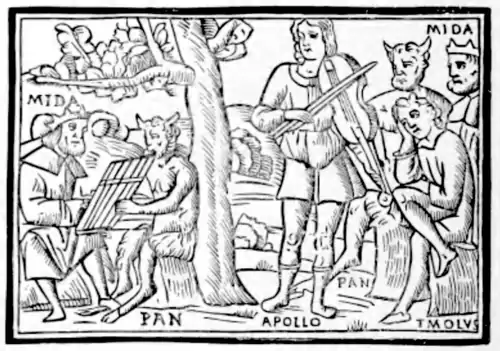70
A HISTORY OF WOOD-ENGRAVING.
22, 23), taken from a Venetian reprint of 1491. An Ovid, printed at Venice in 1497, is adorned with several excellent woodcuts, such as this of The Contest of Apollo and Pan (Fig. 19); and there are other works of similar merit belonging to the same period. The finest example of Italian wood-engraving before it reached its highest perfection in the Hypnerotomachia Poliphili, or Dream of Poliphilo, is a volume which contains the epistles of St. Jerome,

Fig. 19.—The Contest of Apollo and Pan. From Ovid’s “Metamorphoses.” Venice, 1518 (design, 1497).
and a description of cloistral life. This is adorned with a large number of small woodcuts of simple beauty, marked by grace and feeling, and full of reminiscences of moods and sentiments which have long ceased to hold a place in human hearts (Figs. 24, 25, 26). Here is pictured the religious life; the monk’s cell is barely furnished, but it is seldom without shelves of books and a window opening upon a distant prospect; the teacher expounds